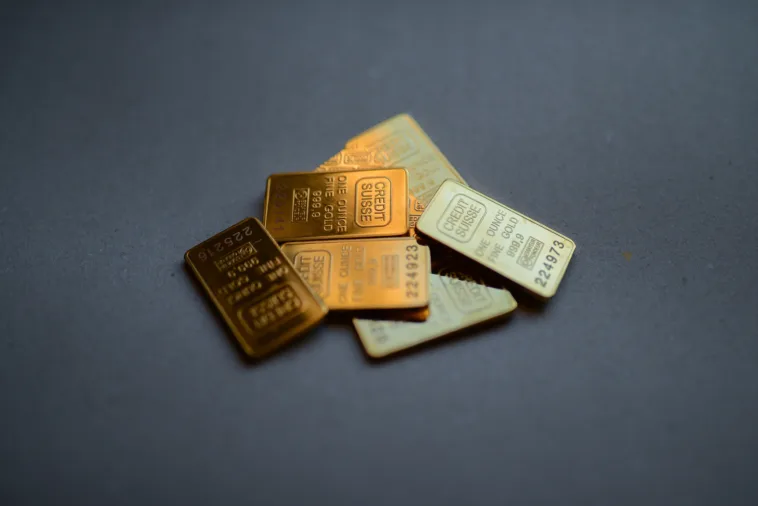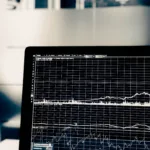In the ever-evolving landscape of financial investments, few assets shine as brightly and timelessly as precious metals. These rare and naturally occurring elements, including gold, silver, platinum, and palladium, have captivated human imagination and held profound economic significance throughout history. As we embark on this journey into the world of investing in precious metals, we will illuminate the path to understanding their intrinsic value, historical relevance, and modern-day appeal in the realm of finance.
Discovering Precious Metals
Precious metals, as the name implies, are esteemed for their rarity and intrinsic worth. They possess a unique allure that extends far beyond their tangible beauty. These enduring assets have not only served as a form of currency but also as symbols of wealth and prosperity in civilizations across the globe.
Yet, what sets precious metals apart extends beyond their aesthetic charm. Each metal possesses a distinctive set of properties and applications that render them invaluable in various industries. From their malleability and durability to their electrical conductivity and reflective brilliance, precious metals have earned their place in everything from exquisite jewellery to the inner workings of modern technology.
Section 1: Types of Precious Metals
In this section, we’ll take a closer look at each of these precious metals, exploring their unique properties, historical significance, and contemporary relevance in the world of finance and investment.
Gold: The Timeless Standard
Let’s begin with gold, often referred to as the “king of metals.” Gold is the quintessential precious metal and, without a doubt, one of the most renowned and widely traded assets in the world. Its enduring popularity spans millennia, as it has served not only as a form of currency but also as a symbol of wealth and status in various cultures.
Gold’s allure isn’t solely based on its lustrous appearance; it possesses unique physical properties that make it stand out among metals. It is highly malleable, resistant to tarnish and corrosion, and an excellent conductor of electricity. These attributes contribute to its diverse range of applications, from crafting intricate jewellery to serving as an essential component in electronics and even dentistry.
But gold’s true value lies beyond its aesthetic and practical uses. It has consistently held its worth through centuries of economic ebbs and flows, making it a reliable store of value in times of uncertainty. Investors often turn to gold as a hedge against inflation and currency devaluation, finding comfort in its historical track record of preserving purchasing power when paper currencies falter.
Silver: The Versatile Metal
Silver, often considered the “little brother” of gold, is another remarkable precious metal with its own unique attributes. While it may not possess gold’s prestige, silver plays a crucial role in both industrial and investment arenas. Its distinctive qualities include exceptional conductivity and reflectivity, making it indispensable in industries like photography, solar energy, and electrical conductors.
One of the key appeals of silver, especially for investors, is its affordability compared to gold. This accessibility allows a broader range of individuals to enter the world of precious metals investment without the significant financial commitment that gold often entails. Like gold, silver has also demonstrated its ability to retain value over time, adding to its attractiveness as an investment asset.
As we delve further into the world of precious metals, we’ll explore the unique characteristics and investment potential of platinum and palladium. These lesser-known but increasingly important metals each have their own story to tell in the world of finance and investment. So, stay with us as we uncover the value and opportunities presented by these remarkable elements.
Section 2: Benefits of Investing in Precious Metals
As we dive deeper into the world of investing in precious metals, it becomes increasingly evident that these unique assets offer a multitude of advantages for investors seeking to diversify their portfolios and safeguard their wealth. In this section, we will explore the numerous benefits that come with incorporating precious metals into your investment strategy. From acting as a hedge against inflation to offering a safe haven during economic turbulence, these shining assets hold a special place in the world of finance.
Hedging Against Inflation: Safeguarding Your Purchasing Power
One of the foremost advantages of investing in precious metals, particularly gold and silver, is their ability to serve as a reliable hedge against inflation. Inflation, the gradual increase in the general price level of goods and services, erodes the purchasing power of fiat currencies. However, precious metals have a historical track record of preserving their intrinsic value when traditional currencies lose ground.
Consider this scenario: as the cost of living rises and the real value of paper money declines, the relative worth of precious metals tends to increase. This phenomenon occurs because the supply of these metals is limited and relatively stable, unlike the printing of additional currency. Therefore, investors often turn to gold and silver as a means to maintain the purchasing power of their wealth in the face of inflationary pressures.
Portfolio Diversification: Spreading Risk and Enhancing Stability
Diversification is a cornerstone of prudent investment strategy, and precious metals provide an excellent avenue for achieving it. When you diversify your portfolio, you spread your investments across different asset classes, reducing the impact of volatility in any one sector. Precious metals, as an asset class distinct from stocks, bonds, and real estate, can enhance the stability and resilience of your overall investment strategy.
During periods of economic uncertainty or market turmoil, the value of traditional assets such as stocks and bonds may decline. However, precious metals, historically uncorrelated with these assets, have often demonstrated their ability to maintain or even increase in value under such circumstances. By including precious metals in your portfolio, you introduce an element of balance that can help mitigate the overall risk in your investment holdings.
Safe-Haven Assets: Weathering the Storms of Economic Crises
Precious metals have long been regarded as safe-haven assets—investments that tend to retain or increase in value during times of economic crises, geopolitical tensions, or financial market turbulence. When fear and uncertainty grip financial markets, investors flock to assets they perceive as stable and secure, and precious metals frequently top the list of such assets.
This safe-haven status is not merely a product of perception but is deeply rooted in the historical behaviour of precious metals. They have consistently demonstrated their resilience, serving as a reliable store of value even when traditional investments falter. For investors seeking a sanctuary in the midst of economic storms, precious metals often prove to be a reliable harbour.
Potential for Capital Appreciation: Realizing Gains Over Time
Beyond their defensive qualities, precious metals also offer potential for capital appreciation. The prices of gold, silver, platinum, and palladium are influenced by a myriad of factors, including supply and demand dynamics, geopolitical events, currency fluctuations, and broader economic trends.
Historically, these metals have exhibited periods of significant price growth. For instance, during times of heightened economic uncertainty or when central banks implement loose monetary policies, the demand for precious metals tends to rise, driving their prices higher. Investors who have allocated a portion of their portfolio to these assets have had the opportunity to realize substantial gains over time.
Tangible Assets vs. Paper Investments: Embracing Tangibility in a Digital World
In an increasingly digital and intangible financial landscape, precious metals stand out as tangible assets. Unlike stocks, bonds, or digital currencies, which exist primarily as electronic entries, precious metals are physical, touchable assets that you can hold in your hand. This tangibility can provide a sense of security and connection to your investments that paper assets may lack.
The appeal of owning something real, something that has been treasured for centuries, resonates with many investors. Holding physical precious metals in the form of coins or bars can be a powerful reminder of the intrinsic value they represent and the role they play in diversifying your wealth.
In the next section, we will explore the various avenues available for investing in precious metals, whether through physical ownership, ETFs, mining stocks, or other financial instruments. We’ll guide you through the practical steps to make these investments a reality, helping you harness the benefits we’ve discussed to enhance your financial security and stability.
Section 3: How to Invest in Precious Metals
It’s time to dive into the practical aspects of how to add these shining assets to your investment portfolio. Whether you’re drawn to the tangible allure of physical metals or prefer the convenience of electronic transactions, there are several avenues available for investors looking to tap into the potential of precious metals. In this section, we will guide you through the various methods of investing in precious metals, each with its own set of advantages and considerations.
Buying Physical Precious Metals: Holding Wealth in Your Hands
For many investors, the allure of owning physical precious metals is unmatched. Holding a tangible store of value in the form of coins, bars, or even exquisite jewellery can be a deeply satisfying experience. Here’s what you need to know about acquiring physical precious metals:
1. Types of Physical Metals:
- Gold and silver coins and bars are among the most common choices for physical ownership.
- Coins like the American Gold Eagle or the Canadian Maple Leaf are popular for gold, while the American Silver Eagle is a well-known silver option.
- Bars, available in various sizes, offer flexibility and can be more cost-effective for larger investments.
2. Purchasing:
- Look for reputable dealers who specialize in precious metals.
- Consider factors like purity, weight, and premium over spot price when making your purchase.
- Verify the authenticity of the metals you acquire, especially when buying from private sellers.
3. Storage and Security:
- Safely storing your physical metals is essential. Options include home safes, bank safe deposit boxes, or professional vault storage.
- Ensure your metals are adequately insured against theft or damage.
Investing Through ETFs: Convenience and Liquidity
Exchange-traded funds (ETFs) offer a convenient way to gain exposure to precious metals without the need for physical possession. Here’s what you should know about investing in precious metals through ETFs:
1. What are Precious Metals ETFs:
- Precious metals ETFs are investment funds that hold physical metals, typically in vaults.
- Each ETF share represents a fractional ownership of the underlying metals.
2. Advantages:
- Liquidity: ETF shares can be bought and sold on stock exchanges like regular stocks, providing ease of access and exit.
- Diversification: ETFs often hold a mix of precious metals, spreading risk across various metals.
- Transparency: Prices and holdings are typically readily available for investors to track.
3. Considerations:
- Expense Ratios: ETFs may charge management fees, impacting returns.
- Counterparty Risk: Investors rely on the ETF issuer’s ability to deliver the underlying metals when needed.
Precious Metals Mining Stocks: Investing in Companies
Investing in precious metals mining stocks provides exposure to companies involved in the extraction and production of these valuable resources. Here’s what you should consider when exploring this avenue:
1. Types of Mining Stocks:
- Gold mining stocks, silver mining stocks, and companies involved in platinum and palladium mining are among the options.
- Junior mining stocks often carry higher risk but may offer greater growth potential.
2. Advantages:
- Leverage: Mining stocks can offer leverage to the underlying metal prices, potentially leading to outsized returns.
- Dividends: Some established mining companies pay dividends to shareholders.
3. Considerations:
- Risk: Mining stocks can be volatile and subject to factors like operational challenges, geopolitical issues, and fluctuating metal prices.
- Research: Thoroughly research mining companies before investing, considering factors such as production costs, reserves, and management expertise.
Futures and Options Contracts: Derivatives for Speculation
For more experienced and risk-tolerant investors, futures and options contracts on precious metals offer a way to speculate on price movements without owning the physical metal. Here’s an overview of these derivatives:
1. Futures Contracts:
- Futures contracts are agreements to buy or sell a specified amount of a metal at a predetermined future date and price.
- They can be highly leveraged but also involve substantial risk, as they require knowledge of the futures market and the ability to manage potential losses.
2. Options Contracts:
- Options contracts grant the holder the right, but not the obligation, to buy or sell a metal at a predetermined price within a specified time frame.
- Options can be used for various strategies, including hedging and speculation.
3. Considerations:
- Derivatives trading is complex and not suitable for all investors.
- It involves the risk of substantial losses and should only be undertaken with a thorough understanding of the market
In the next section, we will delve into the potential risks and considerations associated with investing in precious metals. Understanding these factors will enable you to make informed decisions as you embark on your journey to harness the unique qualities and advantages that precious metals offer to your investment portfolio.
Section 4: Risks and Considerations
As you explore the enticing world of precious metals investing, it’s essential to recognize that, like any investment, it comes with its set of risks and considerations. In this section, we’ll examine the potential challenges and factors you should keep in mind when incorporating precious metals into your investment strategy. Understanding these nuances will help you make well-informed decisions and navigate the path to successful precious metals investment.
Market Volatility and Price Fluctuations: Embracing the Roller Coaster
Precious metals, while renowned for their stability and historical value retention, are not immune to market volatility. The prices of gold, silver, platinum, and palladium can experience significant fluctuations over short periods. Factors such as global economic conditions, geopolitical events, currency movements, and investor sentiment can all influence their prices.
Considerations:
- Volatility is inherent in precious metals markets, so be prepared for price swings.
- Diversifying your precious metals holdings across various metals can help mitigate the impact of price fluctuations.
- Take a long-term perspective and avoid reacting impulsively to short-term price movements.
Storage and Security Concerns: Safeguarding Your Physical Holdings
If you opt for physical precious metals, you’ll need to address storage and security considerations. Safely preserving your valuable assets is of utmost importance.
Considerations:
- Home storage may be an option, but it comes with security and insurance responsibilities.
- Bank-safe deposit boxes provide a secure alternative.
- Professional vault storage services offer high levels of security and insurance, but they may incur additional costs.
Liquidity of Precious Metals Investments: The Time Factor
Selling physical precious metals can take time, particularly if you’re dealing with larger quantities or rare items. The speed and ease of selling depend on various factors, including market conditions and demand.
Considerations:
- Plan ahead if you anticipate needing to convert your precious metals into cash quickly.
- Smaller denominations (e.g., smaller coins) are generally more liquid than larger bars.
- Selling through reputable dealers or exchanges can enhance liquidity.
Tax Implications: The Taxman Cometh
Before diving into precious metals investing, it’s crucial to understand the potential tax implications. Tax treatment can vary depending on factors such as the type of investment, your location, and the duration of your holding.
Considerations:
- Consult with a tax professional who specializes in precious metals investments for guidance.
- Be aware of capital gains tax regulations that apply to the sale of precious metals.
- Understand any tax advantages associated with specific investments, such as Precious Metals IRAs.
Counterparty Risk: The Reliability Factor
When investing in precious metals through ETFs or other financial instruments, you introduce counterparty risk. This risk stems from your reliance on the issuer’s ability to deliver the underlying metals when needed.
Considerations:
- Research the credibility and reputation of the ETF issuer or financial institution.
- Choose ETFs with a history of secure storage and transparent practices.
- Diversify your investments to reduce exposure to any single issuer’s risk.
Understanding Investment Goals: Tailoring Your Approach
Precious metals can serve various purposes within an investment portfolio, depending on your goals. It’s crucial to define your objectives clearly to tailor your investment approach accordingly.
Considerations:
- Are you primarily seeking capital preservation, capital appreciation, or both?
- Determine your time horizon, whether short-term or long-term.
- Align your precious metals holdings with your broader investment strategy and risk tolerance.
By understanding and addressing these risks and considerations, you’ll be better equipped to navigate the world of precious metals investments. Remember that while precious metals can offer unique benefits to your portfolio, a well-rounded and informed strategy is key to maximizing their potential while mitigating potential pitfalls. In the next section, we will delve into various strategies for successful precious metals investing, helping you optimize your approach to these valuable assets.
Section 5: Strategies for Successful Precious Metals Investing
Investing in precious metals can be a rewarding endeavour, but it requires careful planning and strategy. In this section, we’ll explore various approaches and tactics that can help you make the most of your precious metals investments. Whether you’re a novice investor or a seasoned pro, these strategies will guide you towards success in your journey with precious metals.
1. Dollar-Cost Averaging (DCA): A Consistent Path to Wealth Preservation
Dollar-cost averaging is a disciplined approach that involves investing a fixed amount of money at regular intervals, regardless of market conditions. With this strategy, you buy more precious metals when prices are lower and fewer when prices are higher.
Considerations:
- DCA reduces the impact of price volatility over time, smoothing out your average purchase price.
- It encourages consistent investing habits and discourages emotional reactions to market swings.
- Determine the frequency and amount of your investments based on your financial goals and risk tolerance.
2. Setting Clear Investment Goals: Define Your Objectives
Before diving into precious metals, define your investment goals. Are you looking for capital preservation, capital appreciation, or a combination of both? Establishing clear objectives will guide your investment decisions.
Considerations:
- Different metals may align better with specific goals (e.g., gold for preservation, silver for growth).
- Determine your investment horizon, whether it’s short-term or long-term.
- Be realistic about your risk tolerance and align your goals with your comfort level.
3. Staying Informed: Knowledge is Power
Precious metals markets, like any other financial markets, are influenced by a wide range of factors. Staying informed about economic trends, geopolitical events, and market sentiment can help you make informed decisions.
Considerations:
- Regularly follow news and analysis related to precious metals.
- Understand the factors that affect metal prices, such as supply and demand dynamics and currency movements.
- Consider diversifying your information sources to gain a well-rounded perspective.
4. Long-Term vs. Short-Term Strategies: Tailor Your Approach
Decide whether you’re adopting a long-term or short-term strategy with your precious metals investments. Your choice will influence the types of metals you invest in and your overall approach.
Considerations:
- Long-term investors often focus on wealth preservation and choose metals like gold and platinum.
- Short-term traders may seek opportunities for price appreciation and gravitate towards more volatile metals like silver.
- Align your strategy with your investment horizon and risk tolerance.
5. Diversify Your Precious Metals Holdings: Spread the Risk
Diversification is a cornerstone of sound investment strategy. Consider spreading your precious metals holdings across different metals, forms (coins, bars), and investment vehicles (physical, ETFs, mining stocks) to reduce risk.
Considerations:
- Diversification can help mitigate the impact of price fluctuations in any single metal or investment.
- Different metals may perform differently under varying economic conditions.
- Ensure that your diversified portfolio aligns with your investment goals.
6. Keep Emotions in Check: Discipline Matters
Emotions can cloud judgment and lead to impulsive decisions. Maintaining discipline and sticking to your investment strategy is essential for success in precious metals investing.
Considerations:
- Avoid making investment decisions based solely on fear or greed.
- Periodically review your investment portfolio and rebalance if necessary, but do so rationally and with a long-term perspective.
- Seek advice from financial professionals or mentors when needed.
7. Understand the Role of Precious Metals in Your Portfolio: A Balanced Approach
Precious metals should complement your overall investment portfolio. Consider their role as a hedge against economic uncertainty and a diversification tool rather than the sole focus of your investments.
Considerations:
- Determine the percentage of your portfolio allocated to precious metals based on your goals and risk tolerance.
- Understand how precious metals interact with your other investments, such as stocks and bonds.
- Continuously assess and adjust your portfolio to align with changing circumstances.
8. Patience and Resilience: Weathering the Storms
Investing in precious metals can be a long-term endeavour. Be prepared for periods of price volatility and economic uncertainty. Patience and resilience are valuable attributes for precious metals investors.
Considerations:
- Avoid reacting hastily to short-term price fluctuations.
- Stick to your investment plan, even during challenging market conditions.
- Stay focused on your long-term objectives and the role of precious metals in achieving them.
In the next section, we will explore real-life case studies and success stories of investors who have harnessed the potential of precious metals in their portfolios. These examples will provide practical insights into how various strategies can be applied in the real world of investing.
Conclusion: Empowering Your Financial Future with Precious Metals
In our journey through the fascinating world of precious metals investing, we’ve delved into the allure of these timeless assets, explored their numerous advantages, navigated potential risks, and discovered strategies for success. As we conclude this exploration, we hope you now have a comprehensive understanding of the role precious metals can play in empowering your financial future.
The Timeless Appeal of Precious Metals
Precious metals, with their rich history and intrinsic value, have captured the imagination of generations. From the majestic gleam of gold to the versatile brilliance of silver, and the understated elegance of platinum and palladium, these metals have stood the test of time. They have been cherished as symbols of wealth, storehouses of value, and sources of inspiration for countless cultures throughout history.
Unlocking the Benefits of Precious Metals
Our journey unveiled the compelling benefits of investing in precious metals, including their role as hedges against inflation, diversification tools for your portfolio, and safe havens in times of economic turmoil. These shining assets also offer the potential for capital appreciation, adding a dynamic element to your investment strategy. The tangible nature of precious metals provides a sense of security and connection to your wealth in an increasingly digital world.
Navigating Challenges with Knowledge and Strategy
While precious metals present unique opportunities, they also come with a set of challenges. Market volatility, storage considerations, and tax implications are among the factors that require careful planning. By staying informed, setting clear investment goals, and embracing disciplined strategies, you can navigate these challenges with confidence.
A Diverse Range of Strategies
In this exploration, we discussed a diverse range of strategies, from dollar-cost averaging and goal setting to staying informed and diversifying your holdings. We emphasized the importance of aligning your precious metals investments with your overall financial objectives and maintaining discipline throughout your journey. Whether you’re a long-term wealth preserver or a short-term opportunist, there’s a strategy tailored to your needs.
A Journey Worth Embarking Upon
As you conclude your journey through the world of precious metals investing, we encourage you to approach this asset class with a sense of purpose and perspective. Precious metals can serve as pillars of stability in a dynamic financial landscape, enhancing your portfolio’s resilience and preserving your wealth over time.
Remember that every investor’s journey is unique, and there is no one-size-fits-all approach to precious metals investing. Your goals, risk tolerance, and time horizon will ultimately shape your strategy. By continuing to educate yourself, seeking professional guidance when needed, and exercising patience and resilience, you can harness the full potential of precious metals in achieving your financial aspirations.
We wish you every success in your endeavours with precious metals, and may your financial future shine as brightly as the metals themselves. Thank you for joining us on this illuminating journey, and may your investments continue to shine with the brilliance of precious metals.







